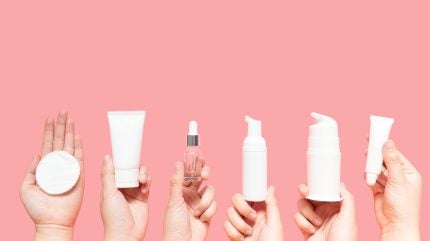
The cosmetics industry, traditionally known for its glamorous packaging and single-use containers, is undergoing a significant transformation. As sustainability becomes a priority for both consumers and businesses, refillable packaging has emerged as a powerful solution to reduce waste and environmental impact.
This shift represents not just a trend but a revolution that could redefine how beauty products are packaged, consumed, and disposed of.
The rise of eco-conscious consumers
The demand for eco-friendly products is at an all-time high, driven by consumers who are increasingly aware of the environmental consequences of their purchasing choices.
In the cosmetics industry, this awareness has led to a growing preference for products that align with sustainable practices. Refillable packaging is at the forefront of this movement, offering a tangible way for brands to reduce their carbon footprint and appeal to environmentally conscious customers.
Consumers are not only looking for high-quality beauty products but also for packaging that reflects their values. Refillable options allow them to minimise waste and make more sustainable choices.
Brands that offer refillable packaging are positioning themselves as leaders in sustainability, which can enhance brand loyalty and attract a new generation of customers who prioritise eco-friendliness.

US Tariffs are shifting - will you react or anticipate?
Don’t let policy changes catch you off guard. Stay proactive with real-time data and expert analysis.
By GlobalDataInnovation in refillable packaging design
The success of refillable packaging in the cosmetics industry is largely due to innovative design solutions that combine functionality with aesthetics.
Packaging professionals are tasked with creating designs that are both practical and visually appealing, ensuring that the refillable aspect does not compromise the product’s luxury feel.
One approach that has gained popularity is the use of durable, high-quality materials for the outer packaging, paired with easily replaceable inner containers or cartridges. This design allows consumers to retain the outer shell while simply swapping out the inner component once the product is used up.
Such systems not only reduce waste but also offer a premium experience, as customers can enjoy the tactile and visual appeal of the original packaging over an extended period.
Moreover, brands are experimenting with modular designs, where different product types can be interchanged within the same packaging system. For instance, a single outer case could house a variety of products, from foundation to lip balm, through the use of interchangeable inserts.
This level of customisation adds value for the consumer and reduces the number of packaging items required, further enhancing the sustainability of the product line.
Challenges and opportunities for packaging professionals
While refillable packaging presents numerous advantages, it also comes with challenges that packaging professionals must address. One of the primary concerns is ensuring that the refillable components maintain the product’s quality and safety standards.
Cosmetics, by nature, are sensitive to contamination and degradation, so the packaging must protect the product throughout its lifecycle.
Another challenge is the need to create refill systems that are easy and convenient for consumers to use. If the process of refilling is cumbersome or messy, customers may be reluctant to adopt the new system, which could undermine the sustainability goals of the brand.
Therefore, intuitive design and user-friendly mechanisms are crucial to the success of refillable packaging.
Despite these challenges, the opportunities for innovation and differentiation are vast. Packaging professionals who can successfully navigate these obstacles will be able to offer brands solutions that not only meet sustainability objectives but also enhance the customer experience.
The development of new materials, such as biodegradable or recyclable options for the refill components, could further boost the environmental benefits of refillable packaging.
The future of cosmetics packaging
As the refillable packaging revolution continues to gain momentum, it is clear that this approach is more than a passing trend. It represents a fundamental shift in how the cosmetics industry approaches packaging, with long-term implications for both brands and consumers.
For brands, adopting refillable packaging can be a powerful way to demonstrate a commitment to sustainability, which is increasingly important in a competitive market.
As regulatory pressures and consumer expectations continue to rise, brands that do not embrace sustainable practices may find themselves at a disadvantage.
From a consumer perspective, refillable packaging offers a way to engage with products in a more responsible and conscious manner. The ability to refill a favourite product, rather than discarding the packaging, aligns with the growing desire to reduce waste and make more sustainable choices.
Looking ahead, the success of refillable packaging in the cosmetics industry could inspire similar innovations in other sectors. As more brands and industries explore refillable options, the packaging landscape could undergo a significant transformation, with sustainability becoming a central focus of design and production processes.
In conclusion, the shift towards refillable packaging in the cosmetics industry marks a critical step in the broader movement towards sustainability. Packaging professionals have a pivotal role to play in this revolution, as they develop the innovative solutions needed to meet the demands of eco-conscious consumers.
By embracing refillable packaging, the cosmetics industry can reduce its environmental impact, enhance the customer experience, and lead the way in sustainable packaging practices.



